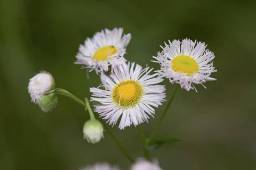Editor’s note: Today’s blog post was written by an instructor in the Roots of Success program at Washington State Penitentiary (WSP) in Walla Walla. Roots of Success is an environmental literacy curriculum used nationwide that has just been implemented at four Washington DOC facilities, including WSP. Interested inmates are trained as instructors in the curriculum. With staff supervision, they teach classes of their peers about a variety of environmental topics.
“Root View”: My Experience as a new Roots of Success Instructor
by Michael Oakes, Roots of Success Instructor
What the heck is “Environmental Literacy” anyway? That’s an expression used a lot in the descriptions of the Roots of Success program. My assumption, as I signed up to become an instructor, was that it was like being “computer literate,” and that turned out to be pretty much on mark. The rest of my assumptions about the program were pretty quickly demolished when I stepped into the day-long instructor course, taught by Dr. Raquel Pinderhughes. I assumed this was likely to be a feel-good icing of basic information dumbed-down to be accessible. In reality, it turned out to be a re-packaged post-graduate curriculum. I assumed we would have a harried mid-level instructor basically providing an official stamp on a diploma-mill, and instead I found a professional, exacting teaching methodology taught to us by Dr. Pinderhughes herself.
Though I was pleasantly surprised and impressed, a question remained: Would inmate students connect with the material? Would this represent nothing more than yet another time sink for people trying to burn time any way they could?
My first indication that I was not alone in seeing the value of Roots of Success was in speaking with my fellow instructors, who came from a variety of backgrounds and had a broad range of views about world politics. Every one of them found some area of the curriculum where they connected and developed genuine passion. That provided some reassurance.
The next milepost came with my preliminary introduction to our students. As we spoke about the curriculum and how it would mesh with the greater sustainability program here at WSP SPL (Washington State Penitentiary’s Sustainable Practices Lab), I heard one guy say, “I never thought I would get jazzed about what earthworms can do.”

The author instructs fellow inmates on the first day of Roots of Success classes at Washington State Penitentiary. Photo by R. Branscum.
In speaking with them about seeking “green” jobs when their sentences are served, more than half of the students were immediately enthusiastic about the idea of work where they might be earning the same wages they are used to, but wherein they go to work every day knowing that they are working toward a cleaner, greener, more sustainable world.
Most of the students come from backgrounds flavored with despair and hopelessness, and the challenges to the environment can sometimes feel pretty desperate indeed. Roots of Success brings that key second component that has been missing in the worldview for most of us. It lights a path toward hope. It paints a picture of a conflict that, for once, is not only winnable, but a conflict that will have no losers at all. In that sense, the first “Root” of success is seeing the difference that even a pretty simple guy can make in a world where earthworms and honeybees are our fellow troops.




















